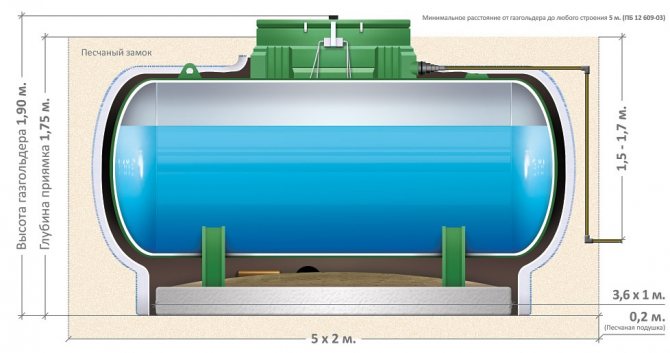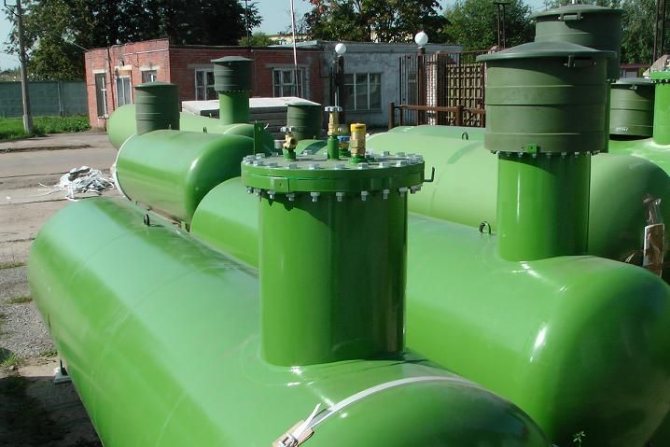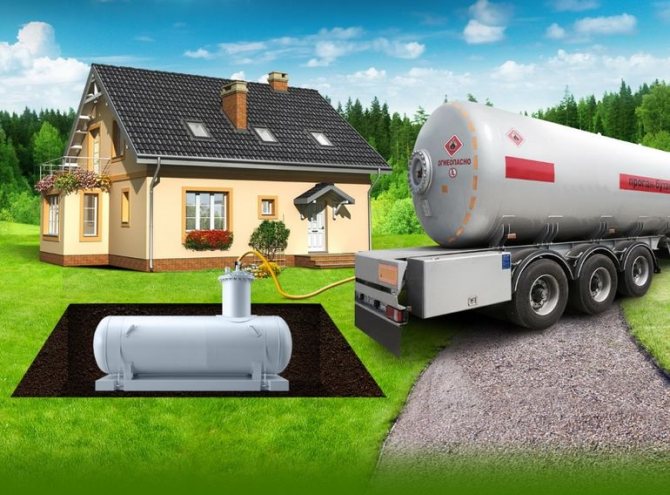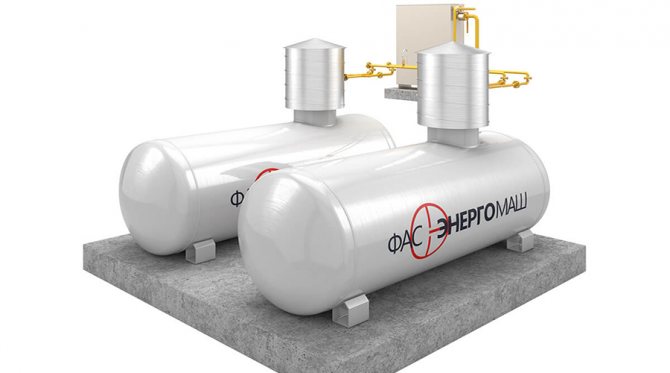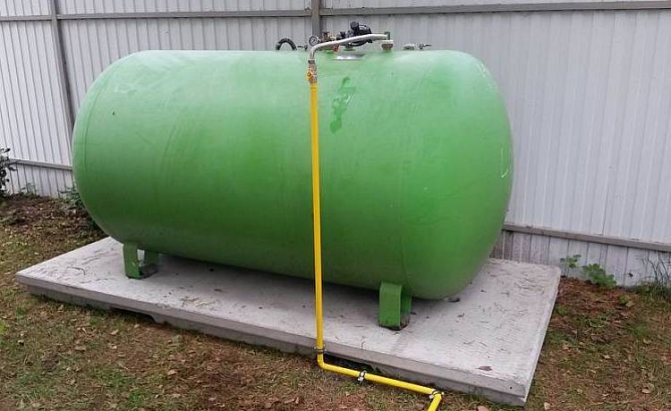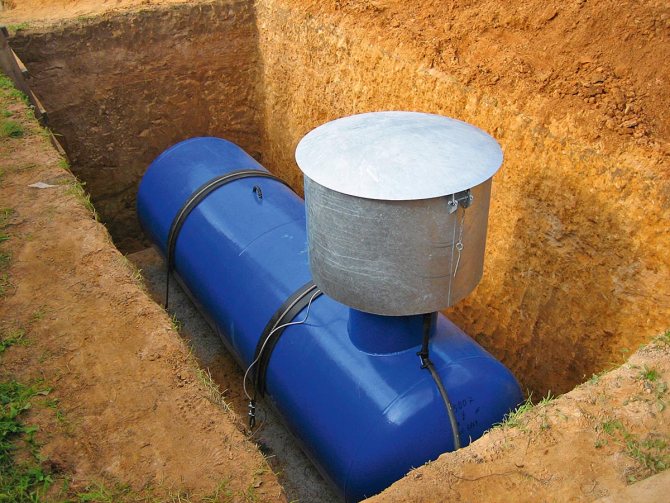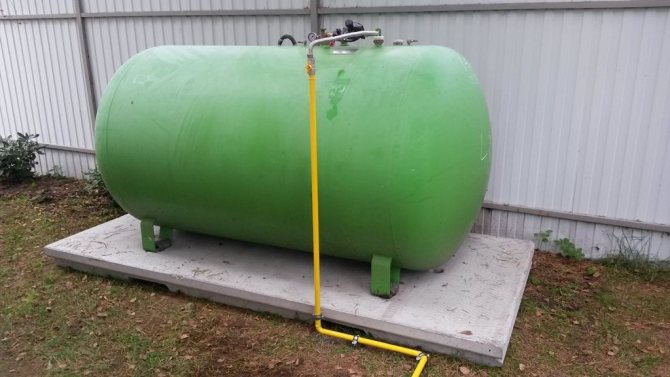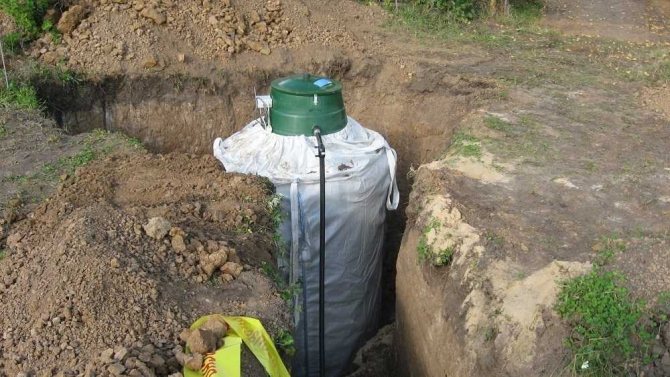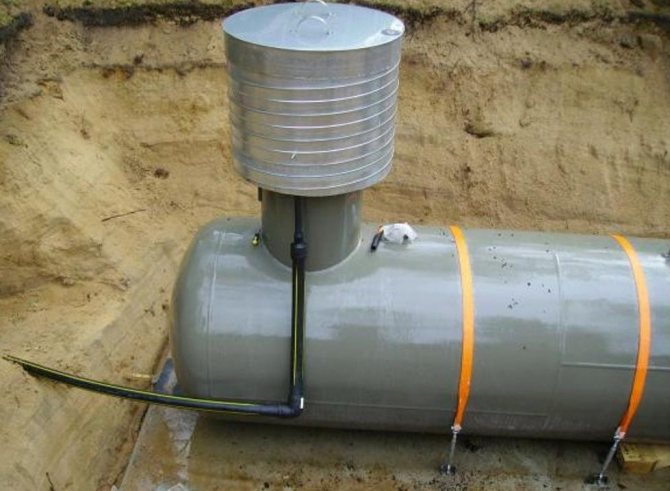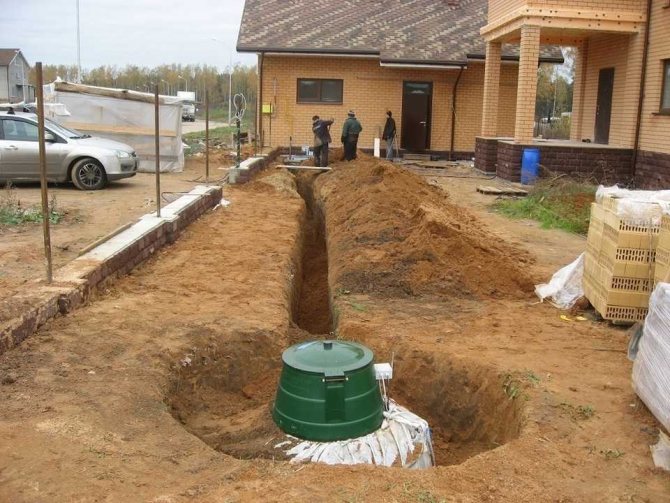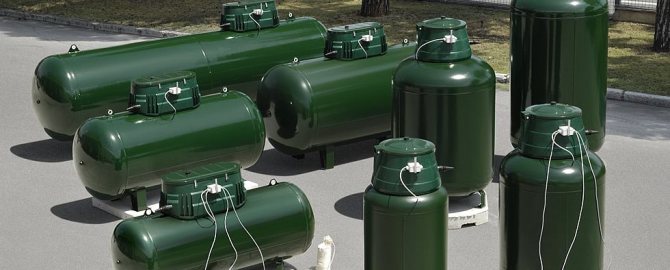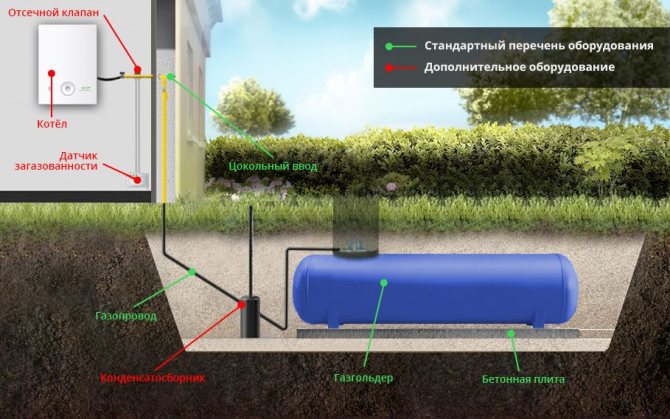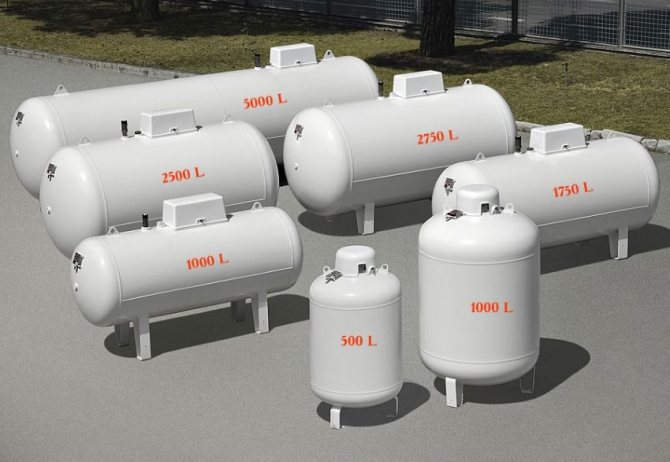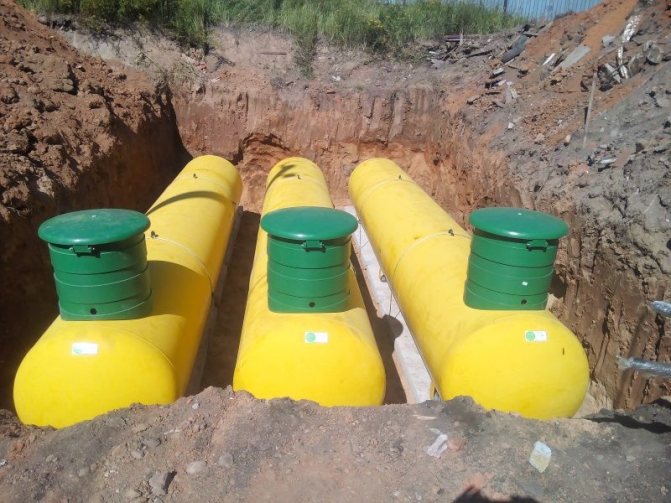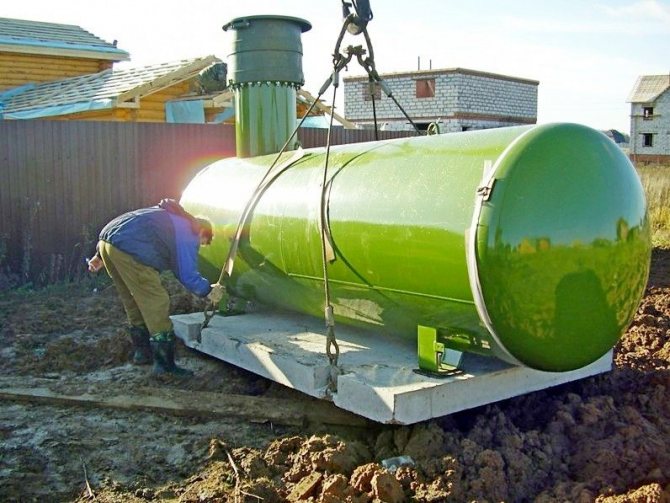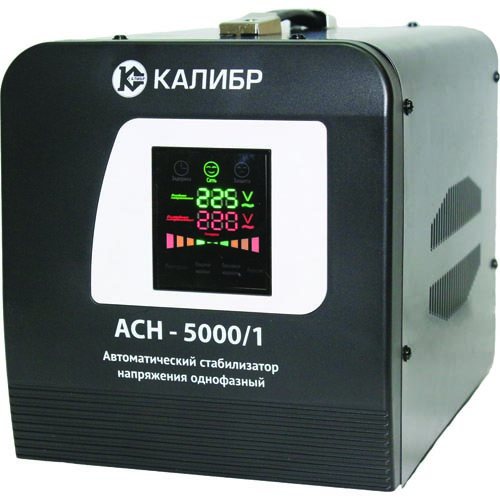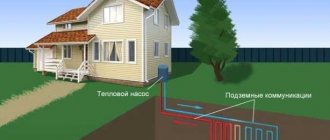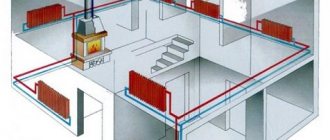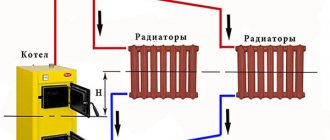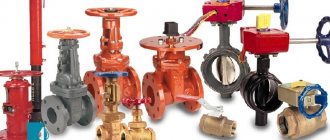The organization of individual gas supply gives a lot of advantages to the owner of a private house, removing his dependence on central communications. In addition, many regions of the country to this day do not have full coverage with main gasification. In this case, it remains to think over the methods and means of storing explosive and therefore demanding fuel. The most rational and financially advantageous solution is a gas tank. What it is? It is a capacious reservoir that can store an impressive supply of gas, sufficient for long-term maintenance of the house.

Appointment of equipment
The gas holder is used as a source of gaseous substances. On the one hand, it acts as a storage facility, and on the other, as a container from which fuel is provided to supply target equipment. The most common installations for heating systems. It is for these purposes that gas boilers and boiler tanks, as well as kitchen stoves, are more often used. Delivery means are pipelines and related communications with plumbing fixtures. At the same time, the gas for the gasholder can be different, but it is for domestic purposes that butane and propane are more often used.
The principle of operation and installation of the gasholder system
A gasholder is a storage tank for liquefied petroleum gas (abbreviated as LPG), which, as a result of evaporation, is supplied to the house through a gas pipeline. Modern gasholder systems have special distribution equipment that regulates the gas supply and controls its amount in the tank. The control takes place in automatic mode, however, if necessary, the gas supply can be shut off manually.
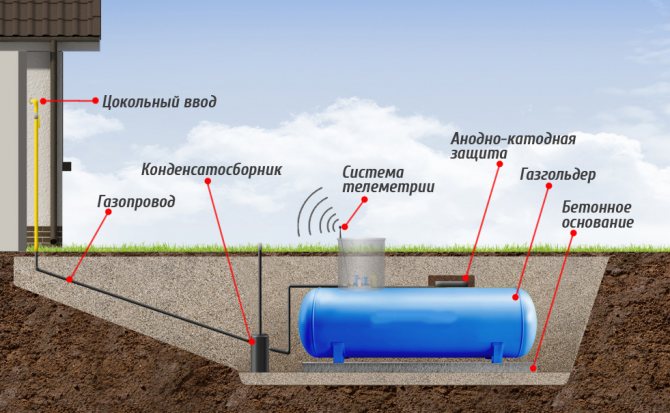

Autonomous gasification supply to the house using a gas tank
Such gas storage facilities can be located above ground or underground. For country houses, the second option is the most optimal, since it allows you to save free space in the adjacent territory. In addition, the location of the tank below the freezing level of the ground contributes to the creation of the correct operating conditions, which will not depend on the ambient temperature.
Underground location implies the use of a special concrete slab, which is placed at the bottom of the pit and acts as a base for the gas tank. In the process of laying the pipeline from the gas storage to the house, it is recommended to use a condensate collector that collects moisture that may be contained in the vapor phase during intensive operation of the gas boiler.
The size of the pit depends on the capacity of the tank used. An article about the volume of a gas tank for a country house tells in more detail about the existing dimensions, where you can also find out the optimal dimensions and cost of different options.


This is how the gas tank installed in the pit looks like.
Equipment device
The traditional design is a one-piece container, the upper part of which provides only one technological opening - the neck. The higher it is, the more effective the protection of the main body from climatic influences. Through the neck, the fuel mixture is filled and taken, which the container contains. The features of the device include the materials used for the gasholder. What is it from a technical point of view? The construction of household models is made mainly of steel with rare inclusions of rubberized materials, which provide a sufficient degree of tightness.Domestic gas tanks are mainly based on low-alloy steel alloys 17G1S and 09G2S. The outer sides are necessarily treated with anti-corrosion compounds made of polyurethane substances, bitumen and epoxy mixtures.


Work processes and equipment control are carried out through shut-off and control valves. Its composition may vary, but even the simplest gas tank for a home will include safety and filling valves, fill level sensors, a regulating reducer, etc. Expensive models provide for the presence of automation with high-precision pressure gauges and programmed control.
System maintenance
Vessels that are constantly and work under pressure, in accordance with federal norms and requirements in the field of industrial safety, must undergo a technical examination with the following frequency:
- External and internal examinations - every 4 years;
- Acoustic emission control of the vessel - every 8 years.
The safety relief valve must be checked as follows: briefly you must open it forcibly. This action should be carried out at least once a month, or as written in the manufacturer's instructions, if the valve is not intended to undergo.
Those. service and maintenance of valves should be carried out by specialists at intervals - once a year.


Do not service the system yourself! Call specialists.
For maximum efficiency of the gas-holder system, the main criterion is the use of high-quality LPG. Therefore, when refueling, it is advisable to use the services of specialized organizations that will not only provide good raw materials, but will also be able to check all devices for operability. More information on this topic can be found in the article: filling the gas tank with gas - the main features.
Precautionary measures
- The tank must be located at least 5 meters from the residential building.
- Filling occurs at 85% of the total.
- Mandatory periodic maintenance of equipment.
- Delivery, refueling and maintenance must be carried out by a company licensed by the Federal Service for Environmental, Technological and Nuclear Supervision.
To avoid unforeseen situations with your gasholder system, contact the Promtehgaz company, which will ensure the supply of high-quality gas and perform the necessary maintenance for the smooth operation of the gas equipment.
Tank characteristics
The main technical and operational characteristics include wall thickness, operating temperature, maintained pressure and volume. Usually, sheet steel with a thickness of 7-10 mm is used in the manufacture. It should be borne in mind that models of the European standard may have lower indicators - about 5-6 mm. But thin walls are not designed to store domestic gas mixtures. For a gas tank in Russian regions, it is more likely that liquefied propane-butane will be used without special processing, therefore, the requirements for the reliability of the structure are increasing. The temperature range also depends on the region of use. As a rule, manufacturers provide enclosures with frost-resistant coatings rated for –40 ° C.
With regard to volume and pressure, these indicators are interrelated. For home use, it is recommended to purchase a reservoir with the ability to correct pressure up to 16 atm. The volume of the gasholder will be 2,000-5,000 liters. There are also household models with a capacity of more than 10,000 liters, but due to their size, such gas storage facilities are rarely used.
Device
The gasholder vessel can be made of steel or reinforced concrete. According to the principle of gas storage, all gasholders are divided into tanks with constant and variable volumes. A vessel of variable volume contains a vertical cylinder with water inside, in the lower part of which there is a bell. As the gas decreases from the container, the bell in the cylinder goes down, thus creating a constant pressure required to supply the entire gas system.
Previously, such gas tanks were used not so much for long-term gas supply as for maintaining constant pressure. Now they are gradually going out of use, however, some continue to work in large enterprises. For example, a variable volume gas tank is still in operation at the domestic chemical enterprise Kazanorgsintez, as well as at the Obvodny Canal in St. Petersburg.
Unlike the above-described gas tanks, which contained gas with a pressure slightly higher than atmospheric pressure, modern gas storage facilities of constant volume can withstand pressures up to 18 atmospheres. Modern technologies make it possible to create strong alloys that can withstand huge loads, the environment of liquefied propane, as well as to fully control the gas pressure. All modern gas tanks have a constant volume.
Varieties of designs
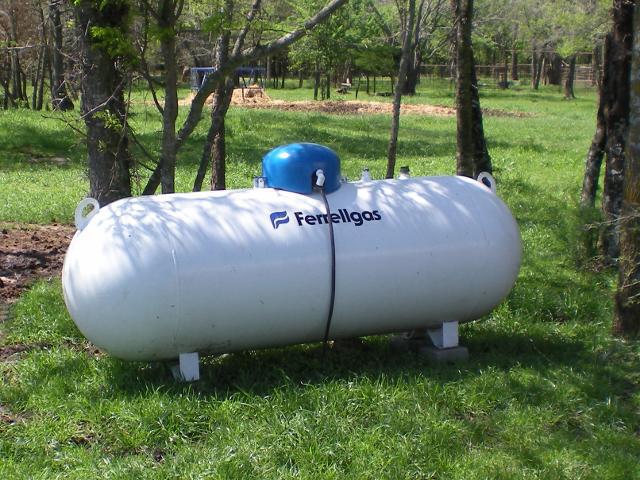

The tanks can be installed horizontally or vertically. The method of arrangement determines the features of the structure of the case. The difference is that the vertical models take up less space but have higher safety requirements. If there is a high level of groundwater at the site, then it is better to use a horizontal gas tank structure. Reviews note that in this case, a deep excavation is not required and the risk of equipment flooding will be minimized. But on the other hand, a large storage area will have to be cleared.
Distinguish between structures and the type of occurrence. This classification also applies to horizontal models that can be completely submerged in the ground or installed on the surface. Moreover, differences in approaches affect both the ergonomics of control and the nuances of maintenance - it is enough to note the specifics of technical support for an underground gas tank. What is it in practice? This is equipment that once a year or several years will need to be dug up and checked for a wide range of technical and physical parameters - from tightness to the quality of protective coatings. And in this respect, ground-based models are much more attractive in terms of maintenance costs and ease of management.
Gas tank for a country house
A short-stay country house equipped with a gas cooking stove and a water heater does not need large gas tanks. In such cases, gasification of a country house can be implemented on the basis of one of the following options:
- Household gas cylinders of 27 or 50 liters, installed directly in the kitchen or adjacent office space. This option is the cheapest, any user can cope with the connection of such cylinders, but at the same time it cannot be called the safest due to the absence of safety devices and the possible consequences of leakage of the container or its joints with other elements.
- Mobile gas tanks with a volume of up to 600 liters. The convenience of such containers for LPG lies in the possibility of transportation by a personal car, a small occupied space and a sufficiently high operational safety. Arriving at the dacha, you bring a mobile gas tank with you, connect it to the gas supply system in 10 minutes and do not experience the slightest inconvenience about calling an LPG refueller when developing cylinders.
- Terrestrial gas holder 500-600 liters... Actual volume gasholder in 500 l, and, of course, the 600-liter gas tank offered by AsGaz provides gas needs for the season, while not taking up much space and being a fairly reliable option for a storage tank for LPG.
- Gas tank for 1000 liters, or a ground gas tank of 800 liters, which is the most reasonable solution to buy if, in addition to the listed gas consumers, there is also a heating boiler in the country. At the request of the customer, a 1 cube gas tank can be installed both above ground and underground.
- Mini gas tanks of 1400 liters will provide warmth and comfort to a large summer cottage throughout the month or a small one throughout the entire season of residence. We remind you that during year-round operation, such a container must be refueled twice a year - with winter and summer fuel. This is a necessary step for the comfortable and safe use of a gas storage tank near residential buildings.
Small gas tank before 1 m3 - solutions for gasification of a country house and country houses of temporary residence.
If there is a need for permanent residence at the dacha or in the case of year-round heat consumers (for example, a large greenhouse), the dacha gasification should be carried out with reservoirs of 2.5 cubic meters and above.
Any similar gas tank to the dacha, the price for various options of which is presented in the corresponding section of our website, requires, in addition to purchasing the tank itself, certain costs for its installation.
These costs include the cost of a gearbox, shut-off and control valves, laying a gas pipeline from the LPG tank to the walls of the facility, and a number of other costs.
You can order a gas tank for a summer residence or ask any question that interests you by contacting us by phone 8 (495) 943-87-84 or by filling out the form
Installing a gas tank
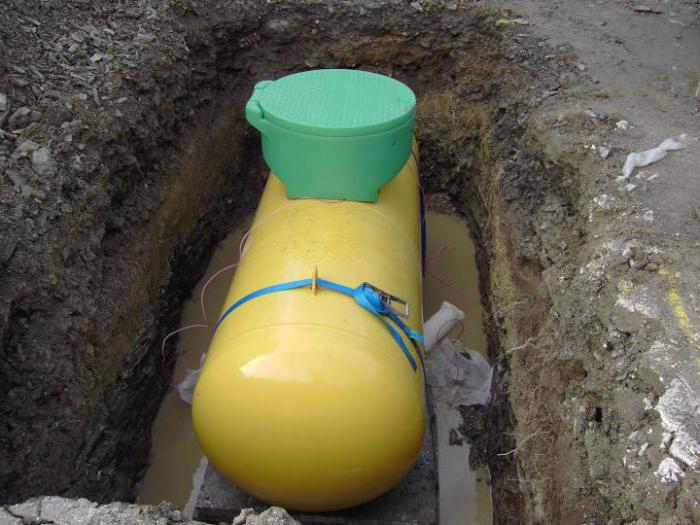

Regardless of the placement method, the structure will require a supporting platform. This will be a kind of foundation that can be made as a screed or use reinforced concrete tiles with a thickness of 15-20 cm. On this platform, with the support of special equipment, the tank is mounted by welding on metal racks. Alternatively, the installation of the gasholder can be carried out without holding devices on an insulated composite pad, which is specially selected for the size of a particular container. This solution is advantageous in that it does not require cutting off the metal racks during dismantling. Then plumbing operations are carried out in the form of laying a pipeline and installing a condensate trap. At the final stage, a control valve is installed in part of the neck.
Installation rules
The installation process for this complex equipment is as follows:
- Choosing a place for installing the tank (at least five meters from where people live);
- Workers are digging a pit that can fit a bulky cylinder. The depth of the pit should be such that the container is located below the freezing zone (more than half a meter from the ground). So it will be possible to achieve more comfortable work in the winter;
- After the pit is ready, you need to prepare its base for the installation of the structure. The bottom of the pit is leveled and then concreted;
- The tank is installed on a concrete base and attached to it with metal cables;
- Then pipes are installed from the gas tank to the living quarters. As a rule, a condensate collector is mounted in parallel;
- Testing the system operation under various loads;
- If the previous stage is successfully completed, the pit is covered with sand;
- Absolutely all manipulations should be reflected in the design documentation.
All work can be done both during the construction of the house and after the completion of construction.
Natural gas storage tankinstalled on the territory of a private house is called a gas tank. However, not everyone knows that this is the basic meaning of the term. After all, there is a well-known hip-hop label that has gathered under its roof the best of the best in Russian rap.
How is the gas tank refueling carried out?
Fuel reserves are replenished, on average, once every 2-3 years. Moreover, this service should be ordered when the residual gas level in the tank is about 20-25%. Refueling is performed directly by special machines provided with hoses 30-40 m long.The whole process consists of the following stages:
- Clearing the area around the equipment and preparing the neck.
- Checking the data of the measuring equipment showing the exact filling level.
- Connecting the tank nozzles to the hose of the special equipment.
- Resetting the counters of the measuring automation.
- Fuel supply and gas tank filling with the support of pumps or a compressor unit.
- Removal of gas residues by blowing out the channels with compressed air.
- Dismantling the connected equipment.
In time, the whole procedure takes on average from 30 to 60 minutes. It depends on the fuel injection technology and the gasholder capacity. Feedback from equipment owners note that it is cheaper to order large volumes in a single order. For example, filling 30% will cost about 20-22 rubles. per 1 liter, and 70% - respectively, 15-17 rubles.
Varieties of gasholder
Gas tanks can be classified according to several criteria, the most popular classifications are given below.
Classification of gas tanks by volume
There are only two types in this classification.
- Gas tanks of variable volume. In such a structure, gas is stored at a pressure close to atmospheric. The volume of the tank varies with the volume of the gas.
- Gas tanks of constant volume. In such tanks, gas is stored at a pressure different from the ambient pressure, it reaches 1.8 MPa.
Classification of gas tanks by material of manufacture
In this classification, it is worth highlighting the three most popular materials used for the manufacture of gas storage facilities.
Site classification
There are two types of tanks in this category.
- Industrial tanks.
- Household tanks.
Household gas tanks can also be divided into several types.
- Mobile gas tank. Such a tank is not stationary and, if desired, can be moved to any desired location. As a rule, such gas tanks are rarely made by hand. Most often they are purchased ready-made. They are a barrel on wheels.
- Mini gas holder. Such a tank is a large gas cylinder, the volume of which is 480 liters, which is equal to 10 ordinary household tanks familiar to all of us. The mini-gasholder is convenient in that it does not require very frequent refueling. As a rule, when connected to a gas stove, reserves from it are enough for 1-2 years.
Manufacturers and prices
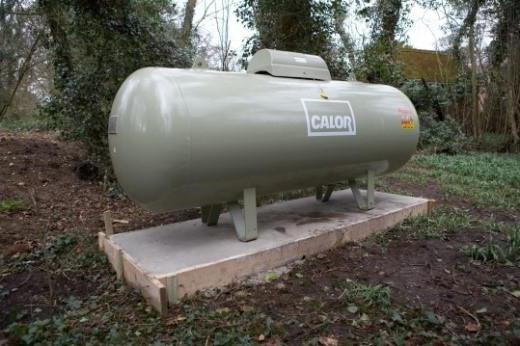

On the engineering equipment market, gas tanks are presented in different segments, including the budget class, the middle group and the premium category. The most prominent manufacturers are Spetsgaz, Real Invest, Chemet, Calor, VPS and Kadatec. The first two companies represent domestic enterprises, while the rest represent Poland and the Czech Republic. As already noted, Russian products are preferable due to their adaptation to the target region of use, but European firms manufacture models according to stricter quality standards. The price question can help to solve the problem of choice - how much does a gas tank cost? Russian models for 2,000-2,500 liters are estimated at 130-150 thousand rubles. Imported products of a similar level are available for 170-200 thous.
Installing a steel tank
As a rule, the installation of a gas tank is very rarely done by hand. The reason for this is very simple: the installation of the gas tank must be carried out by specialists, otherwise it will be very difficult to obtain the appropriate permits for its operation. But if you are sure that you are able to settle all bureaucratic issues, below are detailed instructions on how to install a gas tank and lay an autonomous gasification of a private house.
Gas tank installation diagram
- The first step is to choose the location of the gas tank installation. It should be borne in mind that such structures cannot be installed in the immediate vicinity of the house. The only exception is the mini-gasholder.
- After you have decided on the place where the autonomous gasification of a private house or cottage will begin, at this place you need to make a markup that should correspond to the size of the future tank.
- The next step in the self-made gasification of a country house is to dig a pit and lay communication pipes.
- After the pit is ready, it is necessary to proceed directly to the installation of the gas tank. In no case should it be installed on the bottom of the finished pit. From contact with the ground, corrosion of the structure will occur much faster than it should. Therefore, when installing a gas tank with your own hands for a house, a reinforced concrete slab should be laid at the bottom of the excavation or it should be concreted. But the first option is much cheaper and less hassle.
- We lower the reservoir onto the stove.
- From the tank along a pre-prepared trench to the house, a pipe is installed through which gas will flow into the house to the gas stove, AGV and gas water heater. Before the pipe enters the house, it is imperative to install a valve, with the help of which, in the event of an emergency, it will be possible to block the access of gas.
- All communications are ready. The next step is to fill up the foundation pit and trench. The upper compartment of the gasholder must remain on the surface, otherwise it will not be possible to refuel it.
The gas tank and communication network are ready. Now you can negotiate gas supplies for your home or cottage. The gaseous composition that you can order can be very diverse. The difference between the mixtures lies in the price, consumption and energy efficiency.
As you can see, installing self-contained gasification for home and summer cottages with your own hands does not have any technical difficulties.
Calculation of model parameters
Before making the final decision on the purchase of a gas tank, you should decide on the specific characteristics. For this, first of all, the average gas consumption is estimated. If cylinders were previously used, then the average monthly indicator of their volume is multiplied by 12. Further, the area of a cottage or house is divided by 10 (approximate boiler power in kW). If the area is 120 m2, then the target boiler plant is 12 kW. Accordingly, you need to choose a gas tank for a house with a volume capable of servicing a heating unit of a specified capacity, while maintaining a stock for several months or years in advance (for example, with a consumption of 500 liters per year). Here, the optimal frequency of refueling the tank is also calculated in terms of financial savings and technical feasibility.
Vertical and horizontal gas tanks
In terms of shape, these devices are divided into two types - vertical and horizontal. The main advantage of vertical gas tanks is their relatively small size. However, due to their location in the ground at a greater depth, they require additional heating. Maintaining the optimal temperature regime for vertical units is a rather troublesome task, therefore this type of gas holders is not widespread. More often, vertical gas tanks are installed. They are larger, but if you choose an underground installation, this drawback loses its relevance.
What is the difference between gas tanks for Russia
A gas tank designed for Russia must have a neck or tubes at least 60 centimeters high. This is necessary to install the gas tank below the freezing depth of the soil, where the positive temperature remains even in winter.
If the throat or tubes are shorter, the fittings (gas flow control equipment) at the top of them will be below ground level. This will lead to flooding or groundwater flooding them.
And in fact, and in another case, the result is the same - the cessation of the gas supply.
Many gas tank models common in Russia do not take this problem into account.These include the VPS and Deltagaz gas tanks produced in the Czech Republic and the Russian Faskimmash gas tanks. When using such gas tanks, failures are almost inevitable.
AvtonomGaz gas tanks produced by the Polish plant Chemet are designed specifically for use in Russia and can be installed to a depth of 70 centimeters. They can withstand any frost and any flood without failures.
Which voltage stabilizer for the home is better: owner reviews and model ratings
Today, on the domestic market, you can buy containers for liquefied gas from various countries - Italy, Poland, Bulgaria, Russia.
Two foreign companies can be noted among the main manufacturers of vertical gas tanks:
- Italian firm Antonio Merloni;
- Bulgarian company CITI GAS.
With generally accepted, but slightly different volumes, their products differ in the color of the container and the brand name on it.
So, for example, Italian gas tanks are green, and the blue gas tanks of the Bulgarian company indicate the letter name of the company - city gas and the volume (2700, 4800 and 6400 liters - the main line of vertical gas tanks).
Products of various brands are presented in the corresponding market segment. There are vertical and horizontal, large and mini gas tanks for a country house. When comparing such proposals, in addition to the criteria noted above, one should pay attention to other important details:
- As a rule, imported containers are created using thin steel sheets. But at the same time, an improved anti-corrosion coating is used.
- Domestic counterparts are somewhat stronger. But they have to be additionally protected by anode-cathode circuits.
- Other standards of European fittings (filling stations) can create difficulties in the process of operation. It is necessary to make sure that the selected service organization can fill a gas tank of a certain model with a mixture.
- In Europe, winters are milder than in Russia. Accordingly, there is less requirement for extremely low temperatures. It is necessary to check the passport data taking into account this factor.
- Products in this category of any manufacturer must be certified according to the current legislation.
Read more: Drywall attachment for screwdriver
Deltagaz
Gas tanks of this brand are created in the Czech Republic. However, this enterprise is a structural division of the German company G.A.M. Holding. For this reason, some sellers list both countries in their product descriptions. According to statistical data, Deltagaz (Deltagaz) occupies a leading position in Europe. Our own design office allows you to quickly develop and implement models, taking into account the current market requirements.
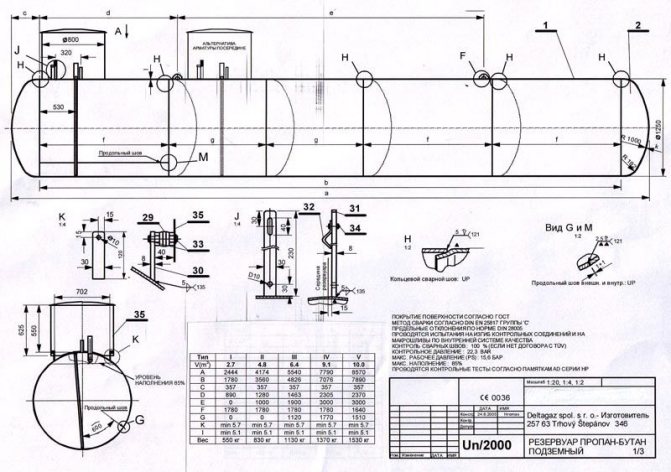

Drawing of a standard gas tank for a Deltagaz country house
High pressure tests of 22.3 bar are used to check welded joints. Limit deviations of technical parameters are regulated by DIN 28005.
Kadatec
These gas tanks are produced in the Czech Republic. The Kadatec catalog contains containers with standard and enlarged necks. It is not difficult to select a product for installation at great depths to ensure efficient gas formation.
To increase the strength of the structure, the bottom is made of steel sheet with a thickness of 5.7 mm. The well is closed with a low temperature resistant polymer cover. For protection, the outer side of the container is sandblasted. Next, a layer (at least 1 mm) of epoxy resin is applied. Its integrity is checked using non-destructive testing techniques.
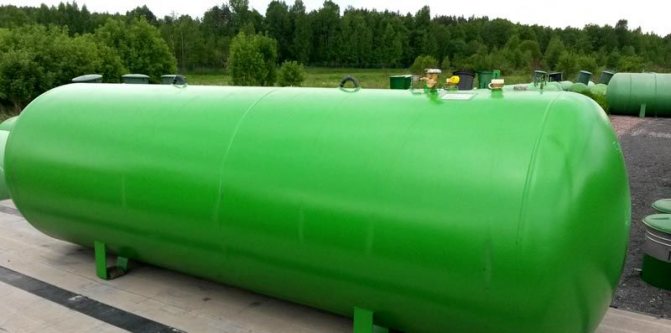

Gas tank Kadatec
This capacity is simple and cost effective. However, in this option, it is impossible to perform mandatory routine procedures with the removal of contaminants. It should be noted that in the current brand catalog there are products with a neck.
This manufacturer produces containers with good corrosion protection, made of steel grades resistant to external influences. With proper installation and operation, the service life of VPS gas tanks (Czech Republic) will exceed 50 years. Reliable German fittings (GOK) are used as standard. In the appropriate design (with a high neck), the containers can be immersed in the ground to a depth of 0.8 m. Such insulation ensures productive gas formation in winter.
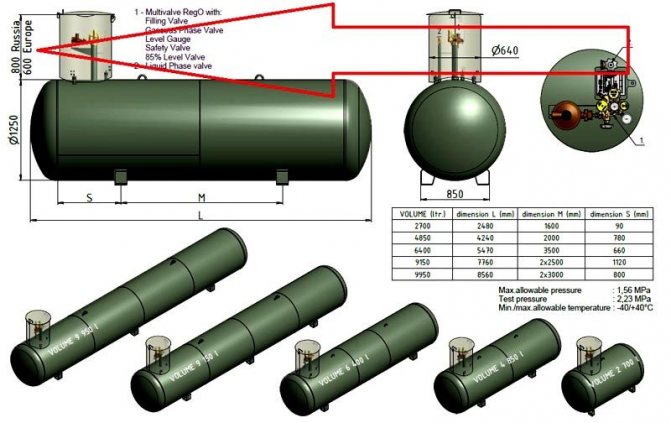

VPS standard product parameters
Pay attention to the different modifications for Europe and Russia (marked with an arrow). In the second version, the neck is increased to 80 cm. With an appropriate installation depth, safe operation is permissible up to an air temperature of -40 ° C.
Chemet
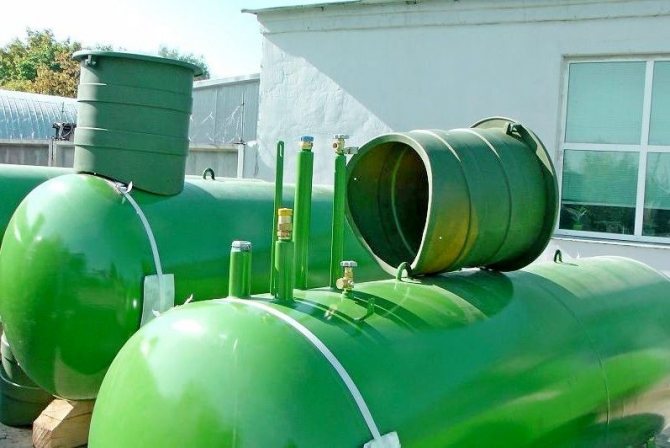

These gas tanks for a country house are produced by a Polish manufacturer. To protect the steel hull, Chemet specialists use epoxy resin. It is applied using "hot" technologies to ensure a uniform structure, the formation of a uniform layer thickness in all areas of the surface.
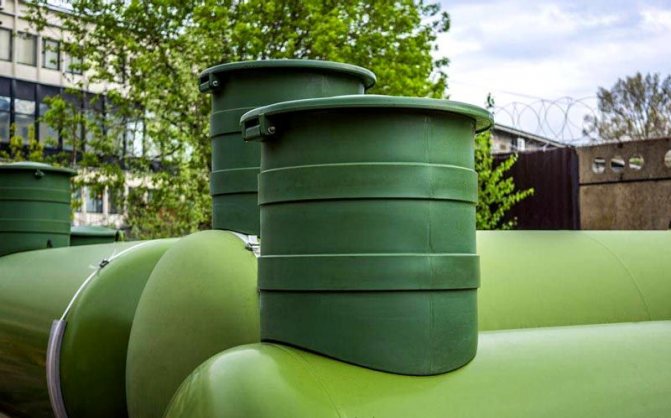

The current product range includes horizontal gas tanks with a capacity from 4850 to 9200 liters.
City-Gas


For the Russian market, this Bulgarian manufacturer offers series created according to different standards.
The composite resin / epoxy coating provides good corrosion protection. The City-Gas catalog contains gas tanks for a country house with a volume of 2700 to 10000 liters and weighing from 580 to 1790 kg.
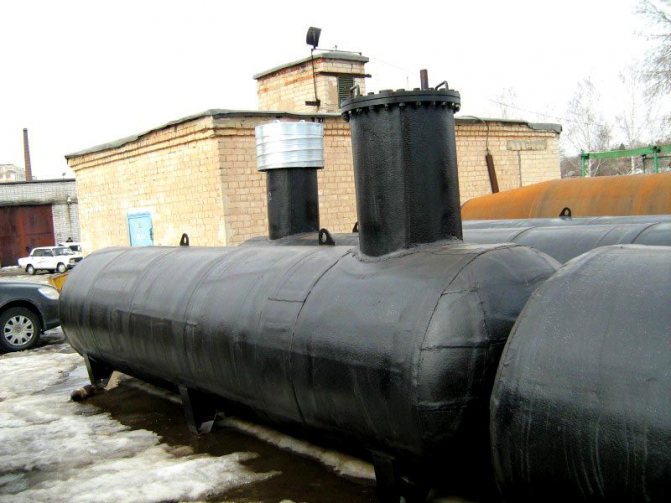

Domestic products
At a democratic cost, Russian-made gas tanks for a country house have good consumer characteristics:
- The walls are made of steel with a thickness of 8 mm or more.
- Neck height - at least 80 cm.
- The total thickness of bitumen insulation is from 6 mm.
- Punch-through corrosion factory warranty - 20 years.
All 220 V voltage stabilizers can be divided into 3 main subgroups - these are devices up to 5 kW, 5-10 kW and 10-15 kW. For these subgroups, we will make our today's small rating. It would not hurt to get acquainted with some reviews of the owners of such equipment about one of the review models.
Let's imagine several models with a power of 5 kW. There are also 2 kW voltage stabilizers, but today we will not talk about them.
| Photo | Make and model | Input voltage range, V | Efficiency,% | Weight, kg | Average cost, rub. |
| SUNTEK SK1.2_RL5000 | 120-285 | 95 | 12 | 7500 |
| Caliber ASN- 5000/1 00000060752 | 140-265 | 90 | 13.8 | 8000 |
| RUCELF SDW.II-6000-L 00-00000470 | 110-275 | 98 | 15.5 | 12300 |
| Stavr SN-5000 | 140-260 | 98 | 10.7 | 5000 |
Such equipment is most often used as a voltage stabilizer for a gas boiler, but you can also connect a small country house to it if it does not have equipment with high power consumption.


"Stavr sn-5000" is a pretty good voltage stabilizer
And yet I would like to say separately about another model, which is an outsider, if we rely on reviews from the network.
Gas tank for "turnkey" summer cottages: the advantage of professional performance
You need to order a gas tank for a turnkey private house only in a specialized company that has the necessary license. It is impossible to install a gas tank with your own hands - it is illegal.
Various volumes of vertical and horizontal gas tanks
To properly install the gas tank, you first need to carry out preparatory work. All dimensions of the pit and its location relative to the building must comply with the norms and requirements for the installation of gas tanks.
- The pit should be 0.5 m larger than the size of the tank on all sides.
- A concrete slab with attachments for the tank legs is laid at the bottom of the pit.
- The trench for the highway should not interfere with or intertwine with other communications.
- The depth of the pipeline trench must be at least 1.70 m, and the slope towards the house must be at least 5 °.
- The distance to the residential building from the gas tank is at least 10 m.
Delivery of the gas tank to the site for installation
Work order
After the completion of the preparatory work, the storage facility is brought to the facility, carefully removed from the transport, and installed on a concrete cushion. In this case, it is very important not to damage the tank coating in order to subsequently avoid the appearance of rust. Having carefully installed the storage in the prepared place, it is necessary to securely fix it by screwing the paws with bolts. This will avoid possible movement of the tank during soil shrinkage. Installation is required strictly in a horizontal position.
Installation of three small underground gas tanks at once
After the installation of the gas tank, work is carried out on the construction of the gas pipeline. The gas supply line consists of steel pipes with an anti-corrosion coating or of plastic pipes, the material of which is low-pressure polyethylene. The pipes are joined together by welding and laid on the sand bed of the trench.
The pit and trenches are first covered with sand, which is well compacted. A warning tape is laid along the entire length of the gas pipeline trench, which will prevent damage to the pipes during further excavation work. Then a soft soil is used, in which there are no stones and other solid particles. The top layer can be covered with fertile soil, on which flowers can be subsequently grown.
Regardless of the type, the gas tank can fully satisfy the gas needs of a private house. And if it is not possible to connect to centralized heating, the gas tank will be a good solution. In addition, despite all the costs of installing and purchasing the tank itself, it is more profitable than using electric heating.
Read later
We will send the material by mail
If you decide to buy a mini gasholder for giving a stationary installation, then you need to remember about the need for periodic refueling. That is, it must be installed in the correct location. The location of the gas tank on the land plot relative to other objects is regulated by the SNIP and SanPIN norms. According to them, the installation of a gas tank in the country should be:
- from the construction site - at a distance of at least 8 meters;
- from the perimeter of the site - at least 2-3 meters;
- from the foundation of the house - at least 10 meters;
- from communications (pipelines, septic tank) - at least 4 m;
- from the source of water intake - at least 5 meters.
When choosing a place where a mini-gas holder will be installed for a summer residence, it is also worth remembering that the length of the refueling hose, as a rule, does not exceed 24 meters. The laying of gas communications can only be carried out in the underground version, and on top of this section, accordingly marked with tapes "Caution, gas!" placement of any structures or elements of landscape design is not allowed.
A gas tank for a turnkey summer cottage can be installed independently, but in this case there can be no question of any operational safety. Autonomous gasification of the country house, fully carried out by our qualified employees for little money within one or two days, will provide you with guaranteed peace of mind and comfort in using the gas supply system of the country house.
Read next: Best Upright Vacuum Cleaners 7 Segment-Leading Models
You can get qualified answers to any questions you may have regarding the gasification of a country house or other objects from our managers.
Often, low-power devices of this type do not require a special connection - just plug the stabilizer wire into the outlet. But more powerful equipment does not provide for such installation. It is impossible to give specific advice here, because each model has its own nuances.Connection diagrams for these devices are always contained in the technical documentation.
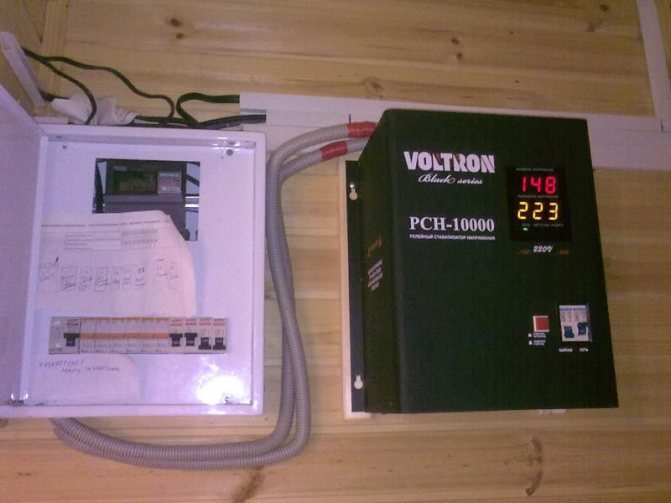

The main thing in the installation is care and accuracy.
If you need a general idea of \ u200b \ u200bconnecting a voltage stabilizer, a video instruction will help with this.
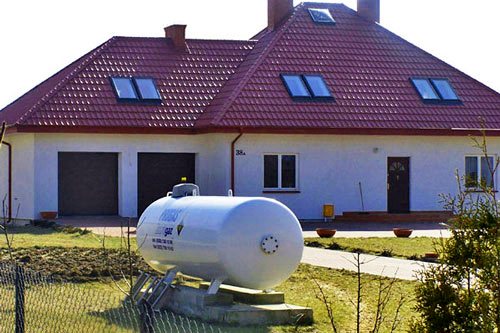

We hope that the information presented today was useful to you. If the dear reader still has questions, we will be happy to answer them in the discussions for this article. And now another video that can help you when choosing a 220 V voltage stabilizer for your home.
In accordance with the SNiP requirements, the turnkey installation of the gas tank should be carried out after the approval of the autonomous gasification project.
An autonomous gas supply system with a gas holder must go through all the stages: installation, insulation of installed equipment, check of work performed, setup and test run of the system.
Underground installation:
Initially, a corresponding pit is prepared for the placement of the tank. At its bottom, a sand and gravel "airbag" is created, which becomes the basis for the installation of a concrete slab. It is also allowed to pour a concrete screed directly on site. The container is attached using pins or steel cables and specially designed metal talers. The basement entrance to the house and the foundation pit itself are connected by a small trench designed for laying communications. A condensate collector is mounted on the gasholder body, which is necessary for the disposal of residual oil from gas compressors and residual liquefied gas mixture, and other additional units. At the final stage, the performance of the entire system is tested by means of the compressor.
Gas tank filling
Our company carries out the delivery of liquefied gas and refueling with a mixture of gas holders for guaranteed non-stop operation of an autonomous gas supply system for country houses.
As a rule, the change in prices for liquefied gas occurs seasonally throughout the year. The minimum prices for gas tank filling services are established during the period from March to September. With the onset of October and throughout the winter, the price of the gas mixture increases. If the volume of the tank is determined correctly, then it is optimal to fill it once a year, choosing the most favorable time for this.
| Region | Price for 1 liter of gas, rub. (depending on the distance from the Moscow Ring Road) | |
| up to 90 km from MKAD | over 90 km from MKAD | |
| Moscow and Moscow region | RUB 18.00 * | check with managers |
* The cost is indicated including delivery
Refueling is performed quickly (30–60 minutes), the speed is influenced by the volume of the gas tank and the pump performance of the tanker truck. We provide these services with a high quality guarantee for all residents of Moscow, the Moscow region and other areas that border the Moscow region.
Today many companies, when buyers of a vertical gas tank contact them, offer to install it on a turnkey basis.
This means that in addition to the actual delivery of the gasholder-capacity, the supplier offers a whole range of additional services, including the following points specified in the Agreement:
- an engineer of the company leaves for inspection and measurements of the site;
- a container for gas, refueling equipment and elements related to the safety system for the use of this equipment are delivered;
- earthworks are being carried out - a pit / pit is being pulled out, a concrete or sand base is being installed;
- conduct a gas pipeline (also underground) - from the gas tank to the house;
- a pressure regulator and other measuring instruments are installed;
- fastening-installation of the entire system is carried out;
- a contract for warranty service is drawn up (at the request of the client).
Thus, taking into account the above, it should be noted that the acquisition of a horizontal or vertical type gas tank and its installation is a rather serious step towards comfortable living conditions in a private house.Therefore, before purchasing it, it is recommended:
- study consumer reviews on the Internet;
- seek advice from specialists who will tell you, based on the characteristics of your home (number of square meters, degree of insulation, number of residents, etc.), the required volume, model and manufacturer of the gas holder;
- when choosing a selling company, be guided by the presence of a federal license for the provision of services for the installation of gas tanks and the installation of autonomous gasification systems.
Installation of a reinforced concrete gas tank
Autonomous gasification using a reinforced concrete gas tank is not as popular as when using a steel gas storage tank. There are several reasons for this.
- More complex installation. Arranging a reinforced concrete storage facility with your own hands is fraught with risks. If the slightest mistake is made during installation, then during operation the gas will be able to evaporate through the micro-holes left. Well, if the leak is insignificant, then the owner of the tank will incur only material losses associated with the loss of gas. But in the event of a large leak, an emergency may occur, which could lead to human casualties.
- Reinforced concrete gas holders, even when installed with their own hands, will cost much more money than installing a metal tank by a team of specialists.
- Such gasholders take up more space than any other type of tank. This is extremely unprofitable if the personal plot is already small.
There are also a number of subjective reasons why the installation of such a reservoir is impractical. But even these three reasons are enough to think about whether it is worthwhile to engage in the installation of such a structure.
If you nevertheless decide to install such a tank with your own hands, do it, observing all precautions and safety precautions. The installation steps are fully consistent with the installation of a metal tank for gas. There is only one significant difference in the arrangement of autonomous gasification: the gas tank is completely made with the help of metal reinforcement and concrete.
The device and principle of operation of the voltage stabilizer
The principle of operation of the gas tank is quite simple: gas is pumped into the tank, and due to the fact that the tank is not completely filled, an air-gas mixture (propane-butane) is formed in the empty space of the storage facility. In order for the process of natural evaporation to be effective, several rules should be followed:
- Do not fill the container with liquefied gas more than 85%.
- When installing the tank, it is necessary to strictly take into account that it should not be cooled below 0 °, therefore, if a surface gas tank is installed, it will need to be insulated.
- If it is assumed that the evaporation area will be small (for example, in vertical containers), then it is necessary to consider an additional evaporator system.
The gas mixture enters the house through a pipeline, as well as through a conventional pipeline. The filling of the gas tank is carried out by specialists working on a machine with a filling tank. The procedure itself resembles refueling a car at a gas station.
The structure of such equipment may differ depending on its type. But the principle of operation is identical for all. The incoming input voltage is smoothed by various nodes, as a result of which even the smallest fluctuations in the output disappear, regardless of the backbone network.
Many modern stabilizers also have their own built-in battery, which allows the equipment connected to it to work for some time when the voltage is turned off. Most often, computers are connected to such computers to be able to save information from RAM. Such equipment is called UBS (uninterruptible network device).


But if you simplify everything, such equipment will look like this
Having understood in general terms how a voltage regulator works, it makes sense to understand what parameters should be paid attention to if you decide to purchase a device for your home? Let's try to figure it out.

